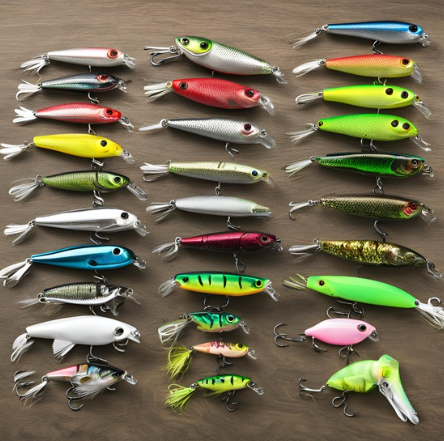Bass fishing is a popular sport enjoyed by anglers all around the world. One of the key factors that can make or break a fishing trip is choosing the right lure color. In this guide, we will delve into the world of bass lure colors and their effectiveness.
Understanding Lure Colors for Bass Fishing
When it comes to bass fishing, the color of your lure can be just as important as the bait itself. The right color can trigger a strike from a hungry bass, while the wrong color can cause them to ignore your bait completely.
There are three main types of lure colors: solid, translucent, and metallic. Solid colors are opaque and do not allow any light to pass through them. Translucent colors allow some light to pass through, giving them a more natural appearance in the water. Metallic colors are reflective and can mimic the look of baitfish scales.
When selecting lure colors, there are three main color properties to consider: hue, saturation, and brightness. Hue refers to the specific color of the lure, such as green, blue, or red. Saturation refers to how pure or intense the color is. A highly saturated color will appear brighter and more noticeable in the water. Brightness refers to how light or dark the color is.
How Bass Perceive Lure Colors
Bass have highly developed vision and can see colors differently depending on the water conditions. In clear water, bass can see a wider range of colors, while in murky or stained water, they may only be able to distinguish between light and dark colors. Additionally, the amount of sunlight and the angle of the sun can affect how bass perceive lure colors.
Best Colors for Bass Lures
Just about any color lure will catch bass but it’s best to break them into 3 categories: natural, solid, and bold. Always start with natural “ghost” colors, then try solid colors, and then whites or chartreuse if the water is stained and they aren’t responding to the first two color categories.
Natural Colors
When fishing in clear water, bass will study your bait. This is especially true in finesse baits. You want to trick them into believing your bait is the real thing. Ghost colors are the best. These are those translucent “see through” colors that really do mimic a baitfish in clear water.
Solid Colors
Solid colors are your colors where there isn’t a ton of dimension to the bait. You have those solid blues, greens, blacks but they aren’t “ghost”. You can’t
see through them. These colors are great when the water has a little stain to it, or in low light conditions where a solid profile is needed.
Bold Colors
Bold colors like white, chartreuse, and other bright colors can be very effective, especially in dirty water or low-light conditions where visibility is low. These colors create a stark contrast against the murky background, making it easier for bass to spot the lure.
Seasonal Color Choices
The time of year can also influence the effectiveness of lure colors:
- Spring: During the pre-spawn, bass are aggressive and will strike at bright colors like red or orange. As the water clears, switch to more natural colors.
- Summer: In the heat of summer, bass prefer natural colors that mimic their prey. Green pumpkin, watermelon, and brown are all good choices.
- Fall: As the leaves change, so should your lure colors. Bass feed heavily on shad in the fall, so silver and white lures are most effective.
- Winter: In the colder months, bass metabolism slows down and they become less aggressive. Dark colors like black and blue can provoke strikes in the winter.
Conclusion
Choosing the right lure color for bass fishing can be a complex task with many factors to consider. However, with a basic understanding of how bass perceive color and what colors are most effective under different conditions, you can make more informed decisions and increase your chances of landing a big bass. Remember, the key is to experiment and see what works best for you and the specific conditions you are fishing in.
